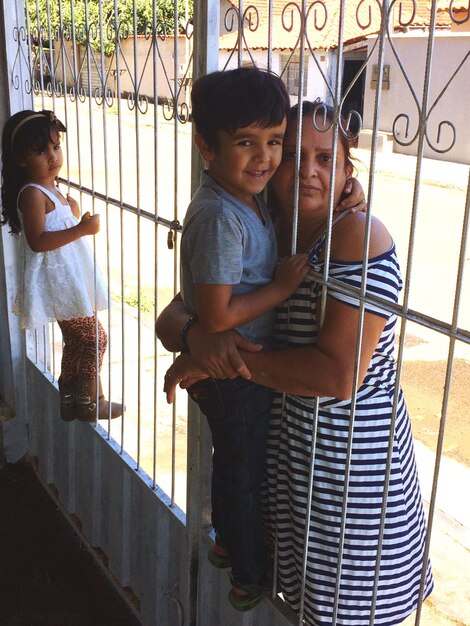Financial Impact: Deportation Defense Costs for Mexican Immigrants 2025

Navigating the intricate landscape of deportation defense for Mexican immigrants in 2025 demands a clear understanding of the substantial financial burdens involved, encompassing legal fees, court costs, and ancillary expenses that profoundly impact individuals and families.
In 2025, confronting the threat of deportation as a Mexican immigrant in the United States presents a daunting challenge, often compounded by significant financial pressures. Understanding the complex and often prohibitive costs associated with deportation defense is crucial for individuals and families facing this extremely difficult situation.
The high cost of legal representation
The primary driver of expenses in deportation defense is the cost of legal representation. Immigration law is highly specialized and complex, requiring attorneys with deep expertise in constantly evolving regulations. These attorneys charge significant fees due to their specialized knowledge, the extensive time commitment involved, and the critical nature of the outcomes.
Retaining a qualified immigration attorney is not merely a formality; it is often essential for navigating the labyrinthine legal system. Without expert guidance, individuals risk missing critical deadlines, misinterpreting legal terminology, or failing to present their case effectively, significantly reducing their chances of a favorable outcome. The initial consultation alone can range widely, setting the stage for what can become a prohibitively expensive journey.
Hourly rates versus flat fees
Attorneys typically structure their fees in one of two ways: hourly rates or flat fees. Hourly rates can vary dramatically based on the attorney’s experience, their firm’s reputation, and the geographical location. In major metropolitan areas, these rates can easily exceed $300-$500 per hour, while less experienced attorneys in smaller towns might charge less.
- Hourly Fees: Provide flexibility but can be unpredictable, depending on the case’s complexity and duration. They are often used for cases with uncertain timelines or a high need for ongoing consultation.
- Flat Fees: Offer predictability, covering a specific set of services for a predetermined amount. This structure is common for standard petitions or initial defense stages but may not cover appeals or unforeseen complications.
- Retainers: Many attorneys require a substantial upfront retainer, which is essentially a down payment against their services. This can be thousands of dollars, making access to immediate legal help difficult for many.
Flat fees, while offering a sense of cost control, often come with carefully defined scopes of service. Any work falling outside that scope, such as unforeseen continuances, changes in circumstances, or appeals, can incur additional charges, effectively nullifying the initial predictability. This uncertainty adds another layer of stress for families already under immense pressure.
Choosing between hourly and flat fees largely depends on the perceived complexity and length of the case. For simple, straightforward matters, a flat fee might be appealing. However, deportation cases are rarely simple, often involving multiple hearings, extensive documentation, and potential appeals, making hourly rates a common choice despite their unpredictability.

Understanding court and administrative fees in immigration proceedings
Beyond attorney fees, individuals facing deportation must also contend with a variety of court and administrative fees. These are non-negotiable costs imposed by government agencies and the judiciary to process cases, file documents, and conduct proceedings. While generally less substantial than legal fees, they can still accumulate significantly, adding to the overall financial burden.
These fees can include filing applications for relief, motions, or appeals. Each step in the legal process often has an associated charge, and these charges are subject to change. Remaining aware of these potential costs is crucial for accurate financial planning, although their fluid nature can make precise budgeting difficult for families.
Common charges and unexpected expenses
Some of the most common fees include those for filing applications such as Cancellation of Removal or asylum claims. While these filings are crucial for seeking relief from deportation, their associated costs can be substantial, often ranging from several hundred to over a thousand dollars per application. These fees are typically non-refundable, regardless of the case’s outcome.
- Application Fees: Costs associated with filing specific forms of relief, like I-589 for asylum or EOIR-42B for Cancellation of Removal. These fees are mandatory and can be significant.
- Biometrics Fees: Required for fingerprinting and background checks, these fees are generally smaller but still contribute to the total expenditure.
- Waiver Filing Fees: If an individual needs to apply for a waiver for certain inadmissibility grounds, there’s an additional fee for this specific application.
Unexpected expenses can also arise, such as fees for expedited processing, special requests for documents, or additional certified copies. While these might seem minor, they can quickly add up, especially if the case encounters unforeseen delays or complexities requiring extra administrative steps. Each small fee contributes to the overall weight on an individual’s financial capacity.
These administrative costs are not merely bureaucratic hurdles; they represent the operational expenses of the immigration system. For many, even these seemingly small charges can be a significant barrier, especially when combined with the substantial legal fees. The cumulative effect of these fees can be overwhelming, pushing families into debt or forcing them to forego essential legal avenues.
Ancillary costs and hidden expenses
The financial impact of deportation defense extends far beyond legal and court fees. There are numerous ancillary costs and hidden expenses that, while often overlooked, can significantly inflate the total financial burden. These include expenses related to evidence gathering, travel, lost wages, and expert testimony, all of which are essential for building a robust defense.
Preparing a strong defense often requires more than just legal arguments; it demands concrete evidence and the testimony of others. The collection and presentation of this supporting material come with their own set of costs, which families must factor into their overall budget. These are not optional expenses but integral components of a comprehensive defense strategy.
Building a comprehensive defense: travel, translation, and more
For individuals residing far from legal counsel or court locations, travel expenses can be considerable. This includes transportation for the defendant, family members, and any witnesses. Accommodations and meals also add to the expense, especially if hearings are delayed or require multiple visits to different jurisdictions.
Translation and interpretation services are frequently needed, particularly for documents not in English or for individuals who require in-court interpretation. Certified translations of birth certificates, marriage licenses, and other crucial documents can be expensive. Likewise, professional interpreters ensure that the nuances of testimony are accurately conveyed in court, a critical component that comes at a price.
- Travel Costs: Expenses for transportation, accommodation, and food for court appearances, attorney meetings, and evidence gathering. This is particularly relevant for those living in rural areas or far from legal services hubs.
- Document Translation: Fees for certified translations of foreign-language documents, vital for presenting evidence in court. This can include extensive personal and official records.
- Expert Witnesses: Costs associated with retaining psychologists, country condition experts, or other professionals whose testimony can strengthen a case, especially in asylum or complex waiver proceedings.
Lost wages due to court appearances, meetings with attorneys, or time spent gathering documents can also impose a severe financial strain. Additionally, psychological evaluations or medical reports may be necessary, particularly in cases involving trauma or specific health conditions, adding further costs for specialized assessments. These expenses are often not covered by legal aid and fall directly on the individual.
The cumulative effect of these seemingly minor expenses can transform an already significant legal bill into an insurmountable financial obstacle. Families are often forced to choose between critical living expenses and funding their defense, a choice no one should have to make. These hidden costs highlight the profound financial implications of facing deportation.
The burden on families and communities
The financial burden of deportation defense extends beyond the individual, severely impacting families and communities. When a family member faces deportation, the financial strain often falls on the entire household, diverting resources from essential needs like housing, food, education, and healthcare. This collective suffering magnifies the already significant per-person costs.
For many immigrant families, income streams are already limited, and any major unexpected expense can lead to immediate financial distress. The absence of one wage earner, even temporarily, can destabilize a household, creating a cascading effect of hardship that resonates through generations. This is not merely an individual’s struggle but a shared family burden.
Strategies for families to manage financial strain
Families often resort to various strategies to cope with these immense financial pressures. This might include taking out loans, working extra hours, or soliciting support from extended family and community networks. These measures, while necessary, often come with their own set of risks, including increased debt or exploitative lending practices. The desperation can lead to precarious financial situations.
- Community Fundraising: Many families rely on local community groups, churches, or online crowdfunding platforms to raise funds for legal fees. These efforts highlight the solidarity but also the systemic lack of adequate support.
- Debt Accumulation: Taking out high-interest loans, using credit cards, or borrowing from informal lenders can lead to prolonged financial instability, even if the deportation case is successful.
- Reduced Spending: Families often cut back on essential expenses, impacting children’s education, healthcare, and overall quality of life. This can have long-term detrimental effects on well-being and development.
The stress associated with financial insecurity, combined with the emotional toll of potential family separation, can also have significant mental and physical health consequences for all family members. Children, in particular, often bear the brunt, experiencing anxiety, academic difficulties, and emotional distress as their parents navigate this crisis. Their future is often inextricably linked to the outcome.
Beyond individual households, communities also feel the ripple effects. Local economies can suffer from reduced spending power and the loss of contributing members. Community organizations and non-profits often stretch their already limited resources to provide support, highlighting the broader societal challenge presented by inaccessible legal defense. The economic stability of entire neighborhoods can be threatened.
Understanding financial aid and pro bono services
Given the exorbitant costs associated with deportation defense, understanding the availability of financial aid and pro bono services is critical for many Mexican immigrants. While access to these resources is often limited and highly competitive, they can provide a lifeline for individuals and families who would otherwise be unable to afford legal representation. These services attempt to bridge a vast justice gap.
Pro bono services, provided by attorneys or organizations without charge, are a crucial recourse. However, there’s immense demand for these services, meaning eligibility is strict and availability is scarce. Many organizations prioritize cases based on factors like vulnerability, likelihood of success, or unique legal circumstances, leaving many unsupported.
Limited pathways to affordable legal assistance
Legal aid organizations and non-profits often offer free or reduced-cost legal services to eligible low-income individuals. These organizations are funded through grants, donations, and government programs, but their resources are finite. Applicants typically undergo a rigorous screening process based on income, assets, and the specifics of their case to determine eligibility.
- Non-profit Organizations: Many non-profits specialize in immigration law and offer free or low-cost services, particularly for vulnerable populations or specific types of cases (e.g., asylum seekers, unaccompanied minors).
- University Legal Clinics: Law school clinics often provide pro bono representation, offering invaluable experience to students while serving the community. However, their capacity is limited.
- Attorney Bar Associations: Some local or state bar associations have pro bono programs connecting volunteer attorneys with individuals in need. Referrals can be difficult to obtain and depend on attorney availability.
Beyond non-profits, some private attorneys take on pro bono cases, often driven by a commitment to social justice. However, this is largely discretionary, and the number of such cases is relatively small compared to the immense need. Their caseloads are often full, and accepting new pro bono clients can be challenging while maintaining a profitable practice.
Eligibility for financial aid is typically based on federal poverty guidelines, making it difficult for individuals who earn above a certain threshold but are still unable to afford private counsel. The limited availability of these crucial services means that the vast majority of individuals facing deportation must still find ways to self-fund their defense, often at substantial personal cost. This gap leaves many vulnerable.
Policy implications and future outlook (2025)
As we look to 2025, the financial impact of deportation defense for Mexican immigrants is set against a backdrop of potential policy changes and evolving immigration enforcement priorities. The political climate plays a significant role in shaping both the volume of deportation cases and the resources allocated to legal aid programs. Future policies could either exacerbate or alleviate the financial burdens faced by families.
Anticipated shifts in immigration policy could influence border enforcement, detention practices, and the criteria for deportation. Any increase in enforcement actions, without a corresponding increase in legal aid funding, would inevitably intensify the financial pressures on affected communities. This creates a precarious future for many.
Potential policy changes and their economic effects
Discussions around universal representation, which would guarantee legal counsel for all immigrants facing deportation, continue but have yet to gain widespread legislative traction. Such a policy would fundamentally transform the landscape, significantly reducing the financial burden on individuals and families, while also streamlining the legal process and ensuring fairer outcomes for all.
- Increased Funding for Legal Aid: A potential policy shift could see increased government funding for non-profit organizations providing immigration legal services, expanding access to affordable defense.
- Streamlined Legal Processes: Reforms aimed at simplifying immigration procedures could reduce the time and resources required for defense, indirectly lowering costs for those who can afford counsel.
- Pro-immigrant Reforms: Policies that expand pathways to legal status or simplify relief applications could proactively decrease the number of individuals facing deportation, thereby reducing demand for defense services.
Conversely, policies that favor stricter enforcement or limit avenues for legal relief could lead to an increase in deportation cases, further straining an already overwhelmed legal aid system and driving up private legal costs. Such measures would only amplify the financial and emotional toll on Mexican immigrant communities.
The economic effects of these policies are far-reaching. When families are forced to deplete their savings or go into debt for legal defense, it impacts their ability to contribute to the economy, invest in their future, and stabilize their local communities. Therefore, immigration policy is not just a humanitarian issue but also a significant economic one, with profound implications for the overall well-being of the nation.
Navigating the legal process and finding support
For Mexican immigrants facing deportation in 2025, navigating the U.S. immigration legal process is a complex, emotionally draining, and financially challenging endeavor. It requires not only legal acumen but also resilience and access to a strong support network. Understanding the steps involved and knowing where to seek help can make a critical difference in the outcome.
The journey through immigration court can be lengthy, with multiple hearings, adjournments, and appeals. Each stage presents its own set of challenges, requiring continuous engagement with legal counsel and proactive management of evidence and documentation. The sheer duration of some cases adds significantly to the financial and psychological strain of an already trying period.
Key steps and essential resources for families
The first crucial step is to seek legal counsel as early as possible. An attorney can assess the case, advise on potential relief options, and guide the individual through the legal labyrinth. Early intervention can often prevent more serious complications and potentially reduce overall costs by resolving issues sooner in the process.
- Consult an Immigration Attorney: Prioritize an initial consultation with a reputable immigration lawyer to understand your rights and options. Look for attorneys specializing in deportation defense.
- Gather All Documentation: Compile all relevant personal and immigration documents. These are crucial for building your case and can save time and money if organized early.
- Explore Community Resources: Connect with non-profit organizations, community centers, and religious groups that may offer legal aid referrals, financial assistance, or emotional support services.
Beyond legal support, emotional and psychological support is equally vital. Organizations dedicated to immigrant rights often provide not only legal referrals but also counseling services and community-based support groups. These networks can help individuals and families cope with the immense stress and uncertainty associated with deportation proceedings.
Ultimately, while the financial impact of deportation defense is undeniably significant, informed decision-making and leveraging available support systems can help mitigate some of the hardship. The road ahead is arduous, but it is one that many Mexican immigrants embark upon with courage, seeking to protect their families and their future in the United States. Their determination is a testament to the profound personal stakes involved.
| Key Point | Brief Description |
|---|---|
| ⚖️ Legal Fees | Attorneys charge hourly rates ($300-$500+) or flat fees for specialized immigration defense, often requiring large retainers. |
| 🏛️ Court & Admin Costs | Includes non-refundable application fees for relief, biometrics, and waivers, adding hundreds to thousands of dollars. |
| 💸 Ancillary Expenses | Hidden costs like travel, document translation, expert witness fees, and lost wages significantly increase total expenses. |
| 🤝 Support & Policy | Limited financial aid and pro bono services exist, while future policy changes could either ease or intensify financial burdens on families. |
Frequently Asked Questions
▼
The primary costs include substantial legal fees, ranging from hourly rates to flat fees and large retainers, along with various court and administrative filing fees for applications and biometrics. These represent the core financial burden.
▼
Attorney fees can vary significantly based on experience, location, and case complexity. They can be hourly ($300-$500+) or flat fees, with initial retainers often in the thousands. Flat fees provide predictability, but typically cover only a defined scope of services.
▼
Yes, hidden costs include travel expenses for court appearances, fees for certified document translations, expert witness testimonies, and lost wages due to time spent on the case. These ancillary expenses significantly add to the overall financial burden for families.
▼
Limited support is available through legal aid organizations, non-profits, and university legal clinics that offer free or reduced-cost services. Pro bono representation from private attorneys is also an option, but access to these services is highly competitive and eligibility is strict.
▼
Policy changes in 2025 could either increase or decrease costs. Universal representation policies would alleviate financial burdens, while stricter enforcement without increased legal aid funding would likely escalate costs and strain resources for Mexican immigrant communities.
Conclusion
Understanding the full scope of costs associated with deportation defense for Mexican immigrants in 2025 reveals a formidable financial landscape. These expenses are a profound barrier to justice, often forcing families into untenable choices between essential needs and legal representation. As policy discussions continue, the imperative for accessible and affordable legal defense remains paramount, not only for the well-being of individuals and families but for the broader social and economic stability of communities across the United States. Navigating this reality demands not only legal acumen but also compassionate support and continued advocacy for equitable access to justice.
Total words: 2197





